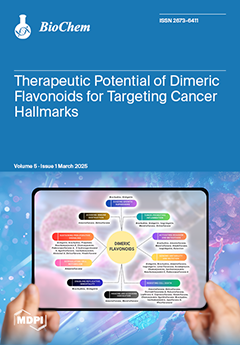The Ebola virus (EBOV), a highly lethal pathogen causing hemorrhagic fever, poses a persistent public health threat, with devastating multi-organ complications and high transmission potential through bodily fluids. EBOV’s pathogenesis is marked by severe oxidative stress and immune dysregulation, where increased reactive oxygen
[...] Read more.
The Ebola virus (EBOV), a highly lethal pathogen causing hemorrhagic fever, poses a persistent public health threat, with devastating multi-organ complications and high transmission potential through bodily fluids. EBOV’s pathogenesis is marked by severe oxidative stress and immune dysregulation, where increased reactive oxygen species (ROS) levels foster cellular damage, hinder immune defenses, and facilitate viral replication. Through immune evasion and suppression of cellular stress responses, EBOV affects both innate and adaptive immunity, activating pyroptosis, PANoptosis, necroptosis, and lymphocyte apoptosis, thereby amplifying inflammation and disease severity. Recent research suggests that bioactive molecules, including quercetin, curcumin, eugenol, and p-anisaldehyde, may offer therapeutic potential due to their antioxidant, anti-inflammatory, and immunomodulatory effects. This review also underscores the potential of conventional treatments, including amiodarone, favipiravir, remdesivir, azithromycin, chloroquine, and nitazoxanide, as therapeutic agents against EBOV, thanks to their antiviral and anti-inflammatory properties, although their efficacy varies across experimental models. These natural compounds could enhance immune resilience by scavenging ROS, modulating inflammation, and mitigating immune dysregulation, presenting promising adjunctive strategies to support conventional EBOV therapies.
Full article




